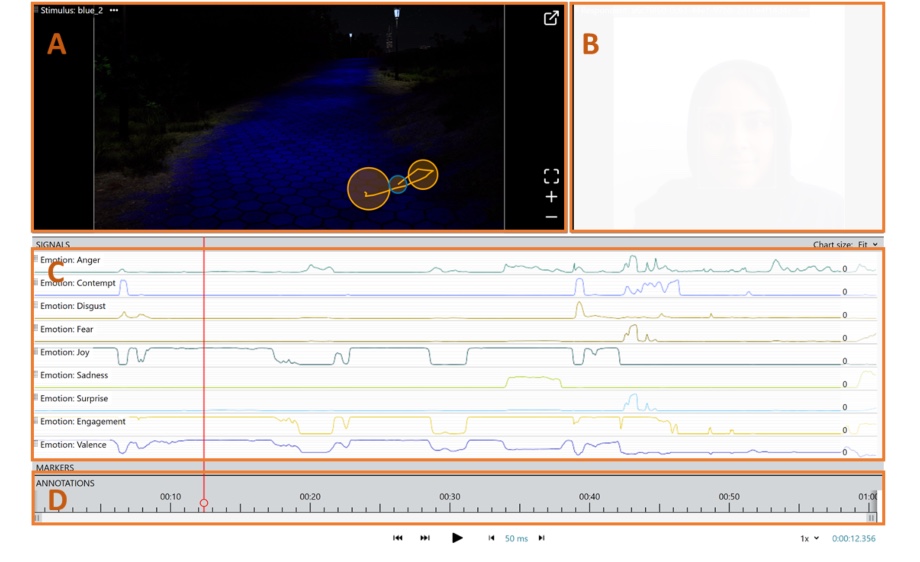New Publication
The positive effect of blue luminescent pathways on urban park visitor’s affective states: A virtual reality online study measuring facial expressions and self-reports
Urban Analytics and City Science

Sara Lanini-Maggi, Martin Lanz, Christopher Hilton and Sara Irina Fabrikant
Abstract
The colour blue often elicits feelings of calmness and contentment, for which evidence has largely been provided in daytime settings. It is unclear whether pathways illuminated in blue, for example, in urban recreational park areas at night confers the same positive impact on night time park visitors. To tackle this open empirical question, we investigated how adding blue self-luminous pavement to park lighting at night time affects park visitors’ emotions compared to conventional white street light illumination. Our goal is to inform design decisions aimed at enhancing the emotional well-being of people outdoors at night in urban environments. Participants’ emotional response was captured at four different time points while watching a video of a walk in a virtual urban park at night, which was lit with white street lights only or with the addition of blue luminescent pavement on the walked paths (between-subject design). To capture visitor’s emotions, we used a simplified version of the Geneva Emotion Wheel (GEW) instrument and online facial expression recognition technology as subjective (self-reports) and objective (physiological) measures of emotion, respectively. The results of the GEW self-reports showed that the addition of a blue self-luminous pavement in a park during night time yielded more positive affect than standard white lighting in park visitors for the first half of the walk. In the second half of the walk through the park, participants’ affective states seemed to equalize between the two lighting conditions. In contrast, sensory data on facial expressions indicated no difference between participants’ emotional states over the whole walk in the two experimental conditions. Consistent with the positive emotional state perceived in the second half of the walk, the state of relaxation experienced after the walk also did not differ between the two lighting conditions. Furthermore, participants’ relaxation judgements after the park walk were more negative overall for females than the more neutral ratings of males. Our results highlight the importance of lighting colour at night for the design of future affect-smart cities that may consider individual and group characteristics with the ultimate intent of promoting public well-being.